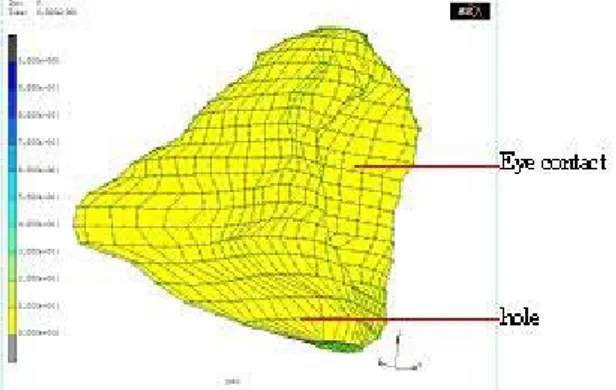A 3D Finite Element evaluation of the exophthalmia reduction
Texte intégral
Figure


Documents relatifs
Then a recursive method is applied to compute the global dynamic stiffness matrix of the whole waveguide and finally the transfer functions in the structure.. This paper presents
The new international context of agriculture and food calls for a new wave of research refered to Regulation School... During the 90s, Agriculture (and food) has generated
The internal erosion of the soil skeleton and the transport of fine particles by pore water are modeled by the mass exchange between solid and fluid phases.. The stress-strain
Another evaluation of the model aimed at comparing the kinematics of the model resulting from simulated muscle activations with an actual 3D motion analysis of the patient foot
For this simulation, half of the patient’s weight was applied onto the foot model while in contact with a horizontal finite element plate (Fig 1 B) having the same number
Neumann or Robin boundary conditions â First results with a mixed formulation Dynamic equation : heat equation. Michel Duprez Rule of the mesh in the Finite Element
The simulations with a random distribution of particles suggest that it may be possible to reduce or even suppress overall serrations in the effective behaviour of strain ageing
4 obtained for the moist Ca(OH), heated in a gold sample holder exhibits only two endothermal effects at about 100°C and 400-450°C. lb), clearly shows that the interaction of the